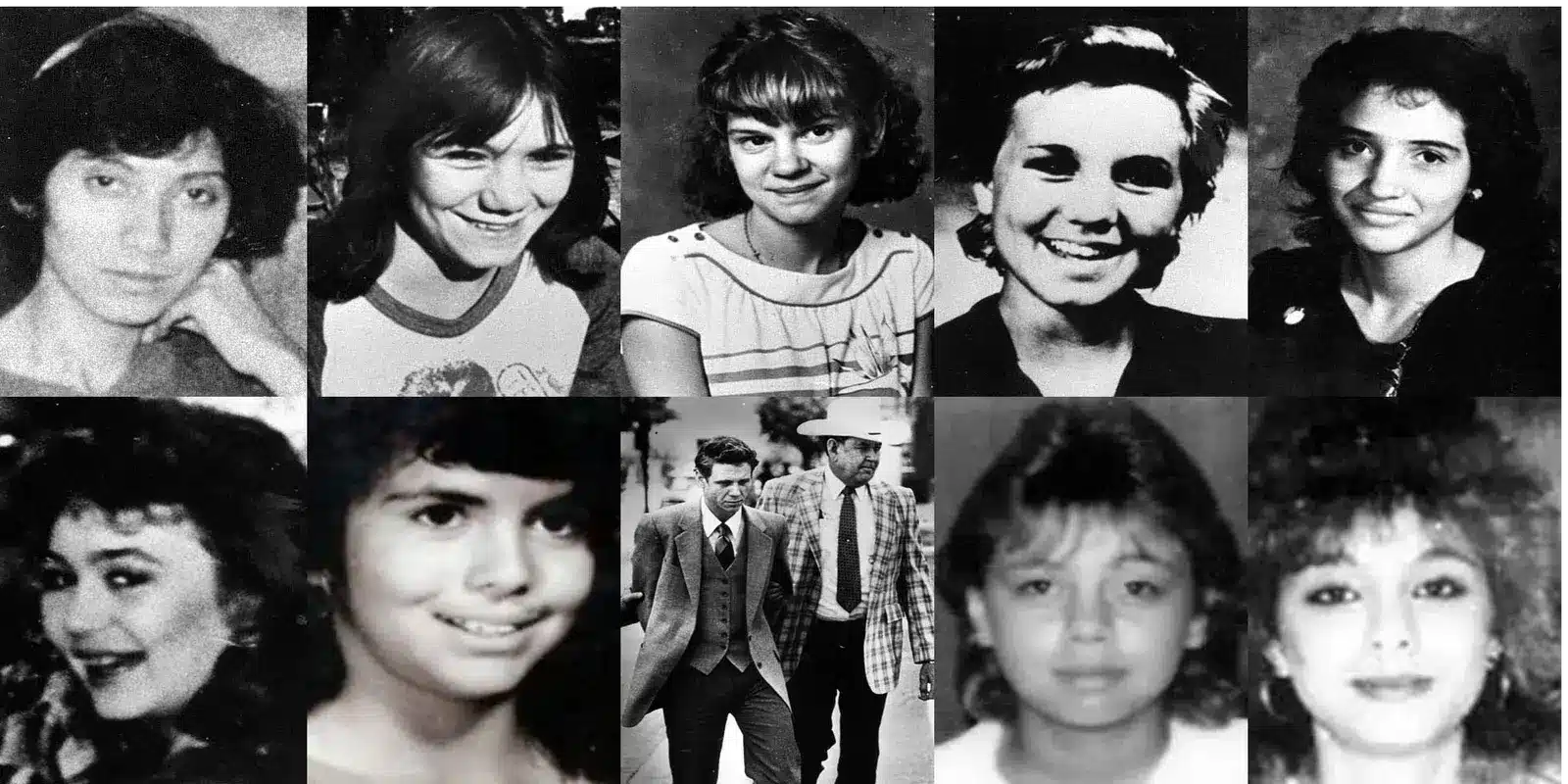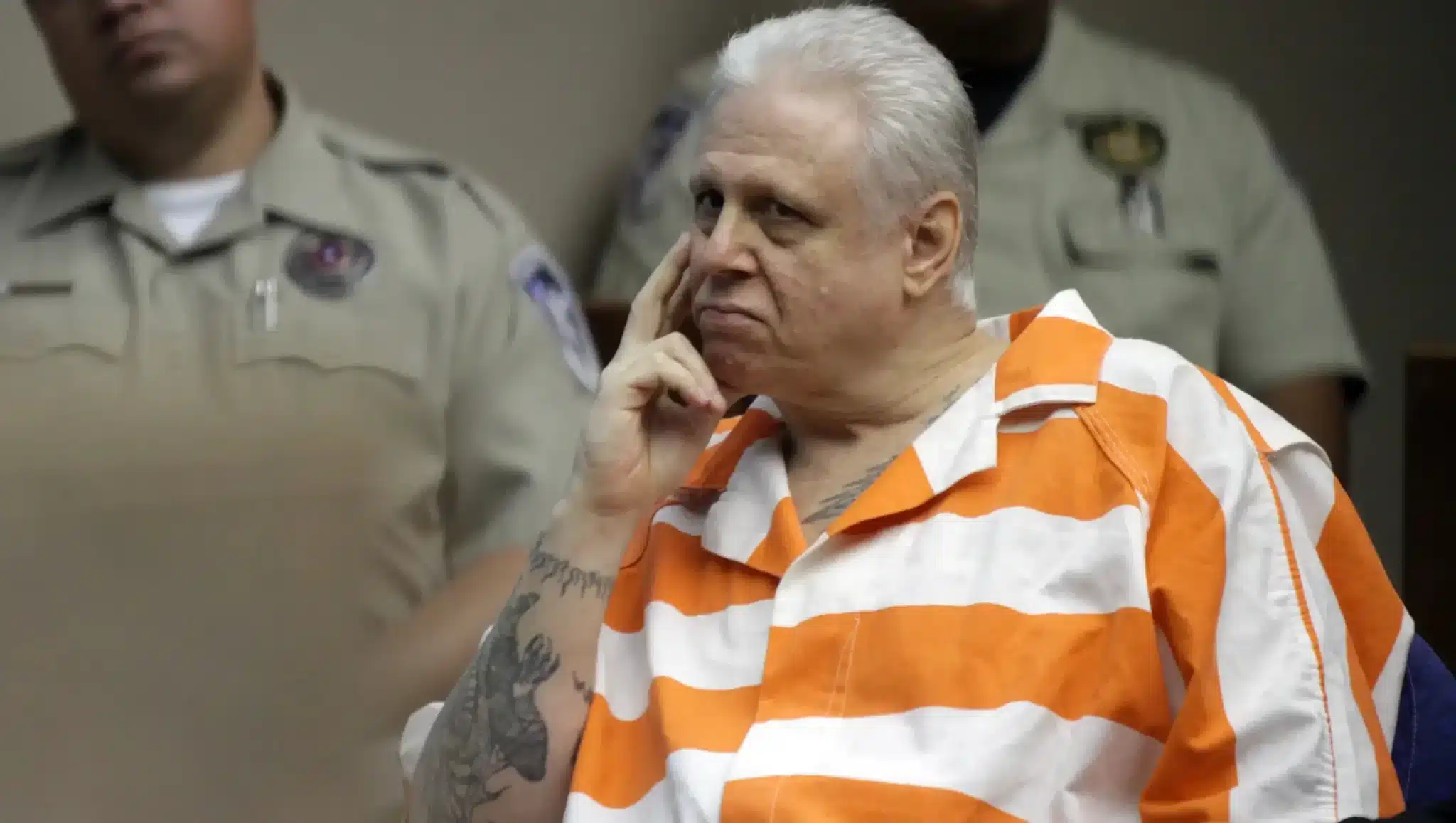Where is Serial Killer David Leonard Wood Today? – David Leonard Wood, known as “The Desert Killer,” was convicted in El Paso, Texas, in the middle of 1987 of kidnapping and killing at least six women and girls. The serial killer and sexual predator were ultimately apprehended and given a death sentence, but he kept delaying his execution by abusing legal loopholes. In “On the Case With Paula Zahn: Buried Dreams” on Investigation Discovery, viewers learn about David’s complex case and how the police eventually apprehended him. So who is David Leonard Wood, lets find out.
Must Read: Christie Mullins’ Murder: Where is Jack Carmen Now?

Who Is David Leonard Wood?
The Desert Killer, also known as David Leonard Wood, was an American serial killer and rapist. He murdered at least six women in El Paso, Texas, between May and August 1987 before concealing their bodies in the desert. Wood was born on June 20, 1957. Despite his denial of involvement in the crimes, he was found guilty and given the death penalty.
The second of four children, David Leonard Wood, was born on June 20, 1957, in San Angelo, Texas.
His father, Leo, who worked as an executive for the El Paso Electric Company, relocated the family to a posh area of El Paso in the 1960s. Even though the family was prosperous, Wood’s mother, Betty, began to dispute with his father frequently and had begun to display symptoms of a mental condition. His father would punish him when he misbehaved by beating him with a paddle.
Wood was detained in August 1976 on suspicion of indecent exposure and sexually harassing a minor; he was found guilty of these counts the following year and sentenced to five years in prison. On December 28, 1978, he was given parole and released after serving almost two years.
He raped a 19-year-old acquaintance in the first incident and a 13-year-old girl he didn’t know in the second, which occurred eight days apart in March 1980.
Wood gained a reputation as a model prisoner and participated in various sex offender rehabilitation programs while serving a 20-year sentence after being swiftly found guilty.
Wood was given parole once more and released on January 14, 1987, after serving only six years of his sentence. He then went back to El Paso. Soon after, he was hired by a furniture company, though he continued to work odd jobs as an auto mechanic and laborer.
Nine girls, ranging in age from 13 to 24, went missing in the El Paso region between February and August 1987. Marjorie Knox, age 14, was the first of them to vanish on February 14. She was a resident in the El Paso suburb of Chaparral, New Mexico, but on that particular day, she traveled to the city to join friends at a Valentine’s Day celebration in Veterans Park. 13-year-old Melissa Alaniz also vanished on March 7—three weeks after she first went missing. The parents of the two girls were acquainted as coworkers at the Rockwell Company. Alaniz’s parents informed police that she had been going through puberty and had gotten to know a group of young men with criminal histories in the months before she vanished.

The 15-year-old Desiree Wheatley’s disappearance was reported to El Paso police on June 7. Several witnesses testified that they had last seen her five days earlier in a convenience shop with a man who had multiple tattoos on his arms. This information came to light during their investigation. Wheatley lived close to Wood’s house, went to H.E. Charles Junior High School, and was not known to drink or take drugs.
Karen Baker, 20, was last seen on June 5 on the property of the Hawaiian Royale Motel. Three days later, the police got another report concerning her disappearance.
Her mother’s claim that she had been abducted and brought to Mexico prompted the FBI to look into the matter because witnesses gave inconsistent descriptions of her actions before going missing.
Cheryl Lynn Vasquez-Dismukes, a 19-year-old worker at a nearby Whataburger, vanished on June 28 in El Paso after visiting Circle K to buy cigarettes. According to witnesses, she was last seen conversing with a male in a pickup truck. Also reported missing on July 3 was a 17-year-old woman named Angelica Jeannette Frausto. Since she was 12 years old, the latter girl had fled her home numerous times and was frequently gone for days or even months. She left Henderson Middle School at age 15 before beginning work as a dancer at Red Flame, a bar that Wood frequented. Police learned during the investigation that one of Frausto’s biker buddies had given her a ride on the day of her disappearance.
The parents of 24-year-old Rosa Maria Casio contacted the police on August 20th, after a month had passed. They said that on August 12, while she was visiting her sister in Ciudad Juárez, she drove to El Paso to buy postage stamps in the evening. However, she never returned. Her 1974 Ford Gran Torino was discovered abandoned on the street the following morning, still holding Casio’s things. Interviews with locals turned up no useful information about her disappearance. Casio was a topless dancer who performed in an El Paso bar, but her parents claimed she was not a prostitute and that she intended to enrol in Dallas College Brookhaven Campus to finish her schooling.
Parkland High School student Dawn Marie Smith, 14, was reported missing in September 1987. In June, she and her parents had a fight before leaving the house, announcing that she would never return. She kept in touch with a few of her relatives up until August 28, when all communication ended. According to local sources, a biker shot and killed Smith on a Chaparral property, but this has never been definitively proven.
Workers from El Paso Water Utilities discovered Casio’s bones in a little grave in the desert to the northwest of the city on September 4.
After being called to the crime scene, police used K-9 units to search the area and unintentionally found Baker’s remains some 100 meters away in another shallow grave.
Family members could identify both of them thanks to their clothing and other belongings discovered at the crime scene. The cause of Baker’s death could not be determined due to her body’s advanced state of decomposition. At the same time, it was believed that Casio was temporarily strangled to death because her jaw was broken in two places.
On October 20, hikers unintentionally came across Wheatley and Smith’s bones, which were both interred in shallow graves 1.5 kilometers apart and next to one another.
Wood is a suspect in the killings since the scene where they were discovered matched the scene where Kelling testified Wood had attacked her.
Investigators discovered that Casio and Wood had been spotted together just before Wood vanished after re-interviewing witnesses to the girls’ disappearances. A witness in the Baker case named Charles Lloyd told authorities that Wood was acquainted with the missing woman and frequently gave her rides on his motorbike. On the day of her disappearance, Baker had gotten into a beige pickup truck that was remarkably similar to Wood’s own vehicle. Smith’s friends and associates also testified that she knew Wood because they kept urging her to get out with him. Based on these findings, Wood was detained on October 23, 1987, and charged with kidnapping and raping Kelling. He pleaded not guilty to the allegations.
Two weeks later, Frausto was found in another shallow grave that was found not far from where Wheatley and Smith had been found.
A few hundred meters from the locations of the other victims, on March 14, 1988, a couple looking for aluminum cans in the desert discovered a woman’s partially buried remains.
The woman was recognised as 23-year-old Ivy Susanna Williams, a native of Colorado who had moved to El Paso after getting married, based on a comparison of the woman’s X-rays and jawbone. Williams, who had a criminal history of drug use and prostitution, was last seen on May 30, but neither her family nor friends reported her missing.
She had performed as a dancer at a club, and the police discovered through interviews with friends that she was connected to bikers.
According to the coroner’s findings, Williams had also endured many stab wounds, including one to the face. The El Paso Police Department began an investigation to find more probable burial places after she was discovered in an area that had already been examined, but they found nothing new.
When Wood was found guilty on June 16, 1988, of kidnapping and raping Kelli, it was deemed an aggravating factor because it went against the terms of his parole and led to a sentence of 50 years in prison.

Where is David Leonard Wood Today?
Since being found guilty, Wood has persisted in claiming his innocence. With the aid of his counsel, he has filed several appeals, all of which have been rejected. His execution was initially set for August 20, 2009, but was postponed the day before because of yet another court appeal submitted by his attorneys, who said their client displayed symptoms of a mental disorder. Following the Supreme Court’s decision in Atkins v. Virginia in 2002, the execution of mentally ill criminals was ruled to be unlawful.
Wood’s counsel presented to the court showed that their client had taken six IQ tests between 1977 and 2011, with his results falling in the following numerical order: 111, 64, 71, 101, 67, and 57. The records, however, did not include information about which versions of the tests Wood took when he was younger, which resulted in the dismissal of his appeal in 2014. This was because the exams were classed by age group and demonstrated a person’s development suitable to their age. The Texas Court of Criminal Appeals considered the case file. It determined that the forensic psychiatric conclusions were dubious, and the psychologists’ techniques for evaluating Wood’s adaptive functioning were not rigorous or reliable. The court determined that Wood and his attorneys had not shown convincing proof of his purported intellectual disability.
Since Wood’s attorneys filed a new appeal in 2016 to have his sentence reversed and a new trial arranged, no new execution date has been established in the ensuing years. Additionally, they have asked for a DNA test, arguing that the results will demonstrate their client’s innocence. Additionally, they asked for the release of records about Wood’s friends, Edward Dean Barton and Salvador Martinez, who had both been investigated as potential suspects in the slayings.
According to the El Paso County Attorney General’s Office, biological remnants from a male contributor were found on a yellow shirt that one of the victims, Dawn Smith, had been wearing at the time of her death. Pieces of Angelica Frausto’s hair, a jacket, pantyhose, Desiree Wheatley’s hair, and a blood-stained knife thought to have been used in the murder of Ivy Williams were among the objects to be utilized for the DNA test.
The final test findings were inconclusive, leading to Wood’s appeal being dismissed. He has been waiting to be executed on Texas’ death row since March 2022 at the Allan B. Polunsky Unit in West Livingston.
YOu can watch full episode of On the Case With Paula Zahn: Buried Dreams here.














